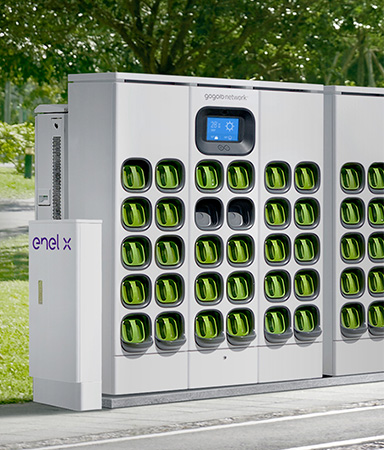- Challenge 1: Using regulations for conventional power plants to standardize virtual power plants impacts market participation willingness - taking the transformer accuracy as an example
Enel X began participating in the day-ahead ancillary service market for non-traditional units before the Energy Trading Platform was established, and through years of experience, we have noticed that the high threshold for market entry significantly affects the willingness of small and medium-sized resources to participate. This is particularly evident in the accuracy specifications of transformers (voltage and current transformers). As of August 26, 2021, if the accuracy of the transformer is less than class 0.3, measurement data can be calculated with the multiplication of measurement error. However, according to the Energy Trading Platform Management Regulations and Operating Procedures officially implemented by Taiwan Power Company on October 1, 2023, the calculation with measurement error method will no longer be used from 2025, and the accuracy of the transformer should be corrected to the specified standard.
To effectively calculate the performance of demand response services, aggregators install meters that measure energy consumption every minute according to the rules set by the energy market. The data’s accuracy must pass Taiwan Power Company’s audit before the resource joins the market. However, in order to participate in the energy trading market, the new rule now requires demand response resources to replace transformers with power plant-level accuracy. For businesses, this involves not only extra expenses but also the suspension of existing operations during equipment replacement, often taking several months to complete.
The significant cost involved reduces the willingness of these emerging resources to participate in the market and forces the grid to lose these ancillary service resources, creating a lose-lose situation for business owners, power companies, and Taiwanese society. Relevant authorities should consider how to release the capacity of private ancillary service resources through fair and effective measurement standards to contribute to the stability of the Taiwan grid.
- Challenge 2: The operational functions of the energy market still need continuous optimization
Currently, Taiwan has not launched trading for the energy market, so the Spinning Reserve programs in the Energy Trading Platform does not have the right to quote energy prices. The energy price depends on the final bid price in Taiwan Power Company’s internal energy market, meaning units that can simultaneously provide ancillary services and bid for energy will affect the bid results of ancillary services based on energy prices. However, the method of determining energy prices is not publicly available market information. In addition, information from different divisions under Taiwan Power Company is not integrated. When registering resources to participate in the market, aggregators or energy users need to separately contact and explain to different departments to obtain the required information, extending the timeline for resources to provide services.
- Challenge 3: High risks of the Taiwanese energy market, and the function of independent regulatory agencies need to be strengthened
Currently, Taiwan has an integrated energy industry operating the Energy Trading Platform, raising concerns about having a player acting as both a player and a referee, representing the interests of electricity companies rather than the public. As the energy industry moves towards liberalization and the energy market matures, an independent regulatory agency is essential, gathering professionals with a focus on users, representing public interests, adopting diverse opinions, setting standards and principles for grid operations, and regularly reviewing and planning to ensure reliable power supply while allowing new resources to participate fairly, reducing grid operating costs and enhancing social welfare.
Looking at the visions and goals mentioned on the official websites of regulatory agencies in Australia, the United States, the European Union, and the United Kingdom, the core idea is to prioritize public interests, succinctly and powerfully articulate involving stakeholders in discussions, promoting efficient investment, and developing competitive and innovative markets to protect the interests of energy consumers. In contrast, Taiwan’s development goals in the “Guideline on Energy Development” and the general principles of the “Electricity Act” only mention directions such as “ improving the welfare of the society,” “complying with the user-pay principle,” “protecting user rights and interests,” and "promoting the supply diversification of the electricity industry” without sufficient details on how to achieve specific goals.
A promising development is the establishment of the “Office for Promoting the Reliability and Resilience of Electricity” by the Ministry of Economic Affairs in April of this year. It is expected to transform into part of the electricity regulatory body in the future, strengthening the functions of the independent regulatory agency. We are happy to see this move and look forward to the realization of the independent regulatory agency establishment.













